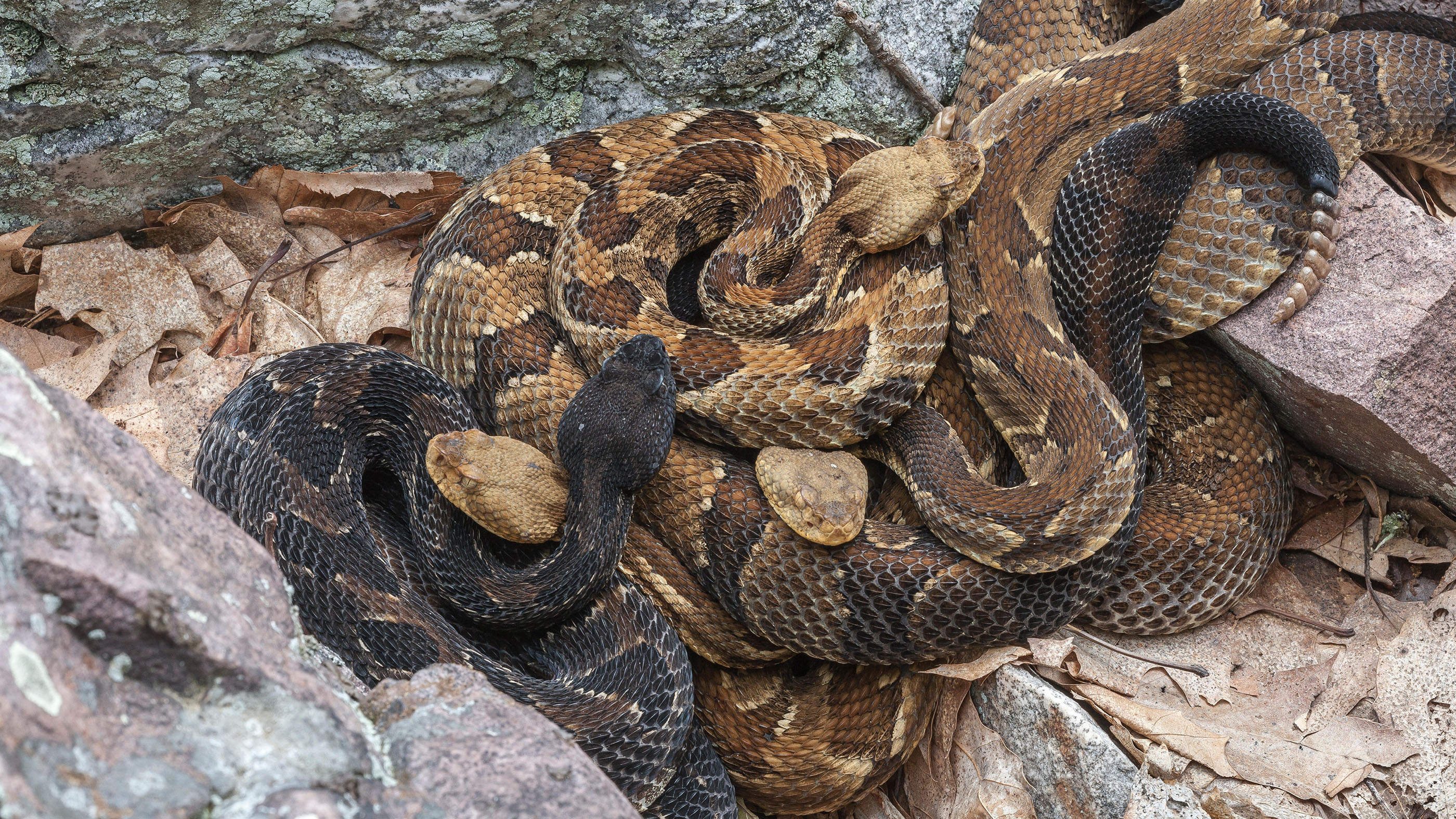Why did more than 90 rattlesnakes move into a California home?
Homeowners were surprised by the slithering guests.

A homeowner in California got a surprise after calling a reptile rescue to handle a few rattlesnake sightings in their home: They were sharing their space with at least 92 of the snakes.
Sonoma County Reptile Rescue director Al Wolf pulled 22 adult rattlesnakes and 59 babies from the house's foundations, and later returned to remove 11 more. The area was ideal for rattlesnake denning, Wolf told the Santa Rosa Press-Democrat, because most of the rocks in the ground had been left in when the home's foundation was dug. Wolf released the snakes in an area away from human habitation.
The foundations may have been a rookery, or a place where rattlesnakes gather in large numbers to give birth, said Emily Taylor, a herpetologist at California Polytechnic State University in San Luis Obispo, who also does rattlesnake relocations. That would explain the large number of babies, Taylor told Live Science. However, the choice of a home's foundations for a rookery is surprising, she said.
Related: Snake photos: Pythons swallow crocodiles and other animals … whole
"It's not typical in California at low elevations to have that many snakes, and it's definitely not typical for them to be under a home," she said.
A nursery for snakes
The snakes were northern Pacific rattlesnakes (Crotalus oreganus), which are found in much of the western United States and western Canada. Rattlesnakes give live birth. Sometimes females find an abandoned rodent hole and give birth alone, Taylor said; other times, they gather in rookeries. These rookeries are more common in higher elevations, she said, where there are fewer warm dens available for the snakes. But otherwise, it's not really clear why some snakes choose rookeries and others go it alone. Perhaps, snakes that gather at rookeries are related, Taylor said, and they are cooperating to give their young a better shot at survival.
"Research has shown that the females will sometimes babysit for one another," she said, with one mom staying with the baby snakes while another mom goes off to hunt.
Sign up for the Live Science daily newsletter now
Get the world’s most fascinating discoveries delivered straight to your inbox.
Related: Captured 17-foot-long python about to have 73 babies
Researchers used to think that snake mamas raised their babies for about two weeks, before the young snakes shed their skin for the first time and set out on their own. But Taylor's research suggests snake motherhood is more complicated. This summer, she set up the first livestream of a rattlesnake rookery, and the initial observations hint that the moms and babies may come and go over a longer period. In a study area near Steamboat Springs, Colorado, where Taylor and her colleagues also observe rattlesnakes, the babies are born in August and stay with their mothers through the winter, while hibernating. In that population, the babies don't head out alone until spring.
"Rattlesnakes are much more complicated than we ever thought before," Taylor said.
Snake relocation services
Most of the snakes removed from the Sonoma County home were "mellow," Wolf told the Press-Democrat. In general, rattlesnakes prefer to steer clear of humans, Taylor said. They avoid high-traffic areas and will attempt to flee before they try to bite.
"Rattlesnakes generally tend to be very secretive and do not want to encounter people and are only going to bite a person or a pet if they feel like their life is at risk," Taylor said.
Rattlesnakes do, however, often find a comfortable habitat near humans, who tend to settle near water and shade and attract rodents, she said. California's recent periods of drought have brought snakes into yards, where sprinkler systems provide a water source.
The snakes in the foundation of the home were probably trying to keep to themselves, Taylor said, though if a homeowner had cornered them unexpectedly or stepped on a basking snake, there could have been a risk of a bite. Rattlesnake venom contains neurotoxins, which attack the nervous system, and hemotoxins, which break down the blood; but they are mostly hemotoxins. These hemotoxins cause the tissue to break down around the bite and can cause heavy bleeding, or hemorrhage. Other symptoms include pain, labored breathing, nausea, vomiting and a rapid or weak pulse. Antivenom can help treat the bite and limit the damage, if given within a few hours. According to the Centers for Disease Control and Prevention, between 7,000 and 8,000 people are bitten by venomous snakes of any species in the United States each year, and five of those individuals die.
It was once typical for homeowners to kill rattlesnakes on their property, but humans are increasingly recognizing that sudden death isn't the best way to deal with these snakes, Taylor said. In most regions, there are paid services or volunteers who will relocate snakes instead of killing them. One resource is the Free Snake Relocation Directory, which contains contact information for volunteer snake relocators around the United States.
Originally published on Live Science.

Stephanie Pappas is a contributing writer for Live Science, covering topics ranging from geoscience to archaeology to the human brain and behavior. She was previously a senior writer for Live Science but is now a freelancer based in Denver, Colorado, and regularly contributes to Scientific American and The Monitor, the monthly magazine of the American Psychological Association. Stephanie received a bachelor's degree in psychology from the University of South Carolina and a graduate certificate in science communication from the University of California, Santa Cruz.










